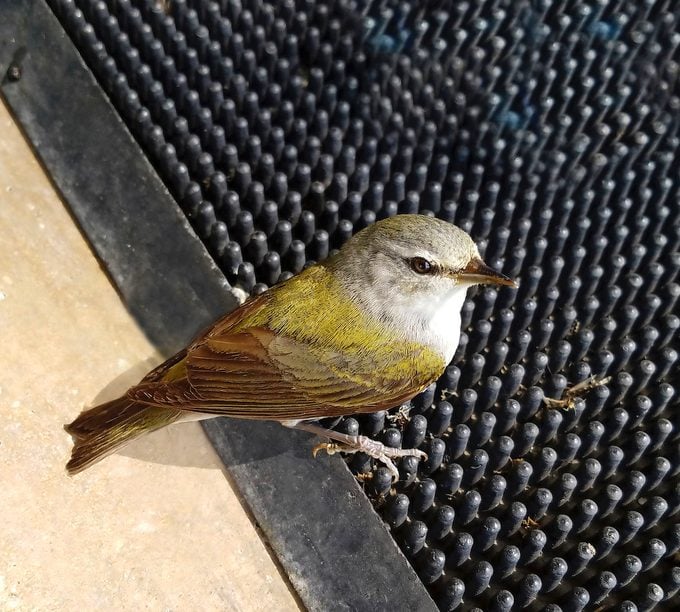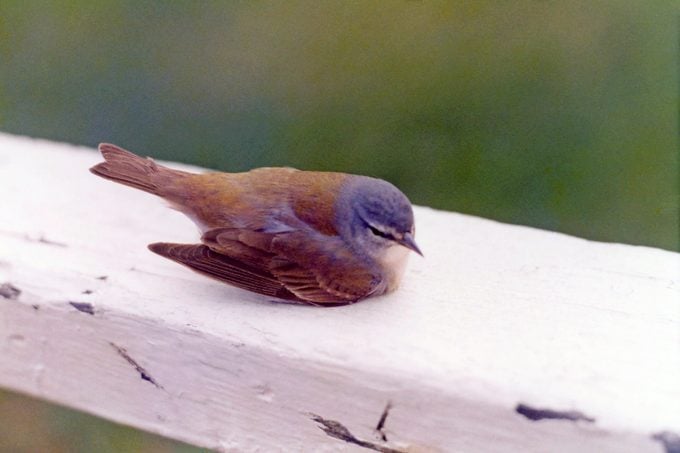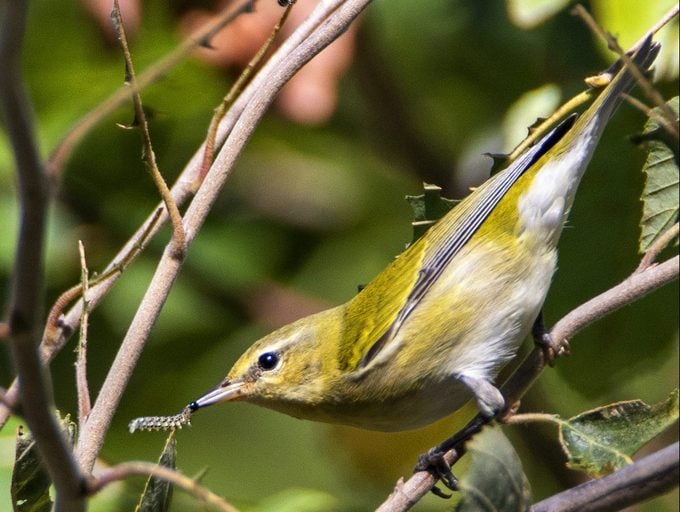How to Identify a Tennessee Warbler
Updated: Jan. 08, 2024
Learn the key field marks to identify a Tennessee warbler, and where to look for these birds during migration and the breeding season.
On This Page
What Does a Tennessee Warbler Look Like?

“This bird flew into my window one afternoon and was dazed. It sat for a bit before flying away. What species is it?” asks Joyce Sorensen of Clear Lake, Iowa.
Birding experts Kenn and Kimberly Kaufman say, “We are happy to clear up the mystery. Your surprised visitor is a male Tennessee warbler. The keys to recognizing it are the small size, thin bill, white eyebrow on a gray head and bright yellow-green back.”
Females and juveniles are more yellow but appear duller.
Mystery Warbler Identification

“This photo is from 1974, but the bird is still a mystery. What is it?” asks reader Judith Clayton of Alexandria, Minnesota.
Kenn and Kimberly say, “We are happy to clear up the mystery. This is a male Tennessee warbler. The very thin, pointed bill places it in the warbler family, and the male Tennessee has the same pattern as yours: blue-gray cap, white eyebrow, dark line through the eye, white throat and an olive green back that contrasts with the gray head.
Despite its name, this warbler migrates through Tennessee only in spring and fall. It spends the summer mostly in Canada and winters in Central America. The one that visited you in Minnesota was probably passing through on migration.”
Range and Habitat
Don’t be fooled by this bird’s name. According to Kenn and Kimberly, like the Nashville warbler, this warbler doesn’t have any special connection to the state of Tennessee. It’s a migratory bird, spending summers mostly in Canada and flying to the tropics of Central America for the winter. It passes through Tennessee (and Iowa) only during its travels in spring and fall.
Diet

Tennessee warblers are especially fond of caterpillars. In winter, they also feed on fruit, berries and flower nectar.
Many migrants, like warblers or kinglets, bypass feeders on their journeys north. To find these insect-eating spring specialties, head to a wooded area or body of water where birds are likely to stop and rest before continuing on to their breeding grounds.
Learn more birding tips for warbler migration and the top warbler hotspots to visit in spring.
Sound
Bird songs courtesy of the Cornell Lab of Ornithology.




















